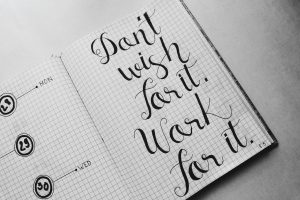Job Interview Success with the STAR Method
When it comes to job interviews, mastering the STAR Method can truly boost your chances of scoring that gig. Getting the hang of this approach and knowing why bosses dig it can give you the upper hand during the hiring process.
Understanding the STAR Method
So, what’s this STAR thing all about? It’s a nifty way of tackling those nerve-racking behavioral interview questions. STAR stands for Situation, Task, Action, and Result. By sticking to this format, you can whip up solid, well-thought-out answers that show off your skills and past experiences like a pro.
Why Employers Use the STAR Method
Bosses dig the STAR Method because it helps them dig deep into how you’ve behaved and performed in the past. When they throw behavioral questions your way, looking for STAR-style answers, it’s their way of seeing how you handle tricky spots, own up to your duties, and come out winning with real-life examples from your past gigs.
They love it ’cause it helps them figure out if you’re gonna fit in based on actual situations—not just what you think you’d do. It gives them a clearer picture of your chops, problem-solving mojo, and if you vibe with the job’s needs.
Grasping why the STAR Method’s a big deal and how it rolls out in interviews means you can walk in ready, show off what you bring to the table, and stand out in the crowded job scene. Want the lowdown on how to rock the STAR Method when those interview questions come at ya? Check out our article on star method for answering interview questions.
Breaking Down the STAR Method
When it comes to nailing those job interviews, knowing the STAR Method is like having a secret weapon in your back pocket. Made up of four parts – Situation, Task, Action, and Result – it’s as simple as breaking out your story into bite-sized, digestible pieces.
Situation: Painting the Picture
First up is ‘Situation.’ Think of it as setting the stage. Tell them where you were, what was happening, and the curveballs life threw at you. You want the interviewer to feel like they’re right there with you, understanding why this particular moment mattered. Setting the scene right is the anchor for the rest of your story.
Task: Picking Up the Baton
Once the stage is set, move on to ‘Task.’ This is your time to zero in on what you needed to make happen. What was your mission impossible? Spill the beans on your goals. Let them see that you took on the challenge with a clear head and a plan to tackle it.
Action: Rolling Up Your Sleeves
In the ‘Action’ segment, it’s all about what you did and how you did it. Dive into the nitty-gritty of your actions—what steps you took, the strategies you cooked up—everything you did to turn the tide. The interviewer wants to see you in action mode, crafting solutions out of thin air.
Result: The Big Finish
Finally, the ‘Result’ is where you get to brag a bit (in a humble way, of course). Talk about the end game. What came out of your efforts? Did everything go as planned, or were there lessons learned that added flavor to your expertise? Numbers go a long way here, so don’t be shy about it.
Cracking the STAR Method code means lining up your stories in a way that clicks with interviewers. Being clear, cutting the fluff, and letting your wins and learnings shine can put you at the top of their list. For more tips on telling your STAR tales, check out our star method interview examples. Go ace that interview!
Getting Ready with the STAR Method
Alright, gearing up for that big interview? Let’s make sure you’re ready to roll with the STAR method. Yeah, it’s all about struttin’ your stuff—highlighting what makes you the real deal. Here’s what you need to hit the ground running: pick out the golden moments in your history, nail those STAR yarns, and adjust your tales to fit the gig like a glove.
Spotting Your Prime Experiences
First up, take a moment – maybe over a cup of coffee – to mull over your past and pinpoint the times you’ve knocked it out of the park. We’re talking the times you faced a hiccup, took the lead, or just plain smashed it. Think along the lines of group projects, leadership gigs, or tackling a problem like a pro.
By zoning in on these prime experiences, you’ll have a bunch of STAR stories ready to go. These stories need to pack a punch, showcasing what you can do and how you fit the bill for the job you’re after. Zero in on what’s asked in the job post and link ’em to what you’ve done before.
Rehearsing Your STAR Stories
Got your experiences lined up? Awesome. Now, let’s get storytelling. Lay down each anecdote using the Situation, Task, Action, and Result framework. Stick to the point but don’t skimp on the details. Highlight those killer moves you made and the outcomes that followed.
Talking through your stories out loud is crucial—even if it’s just to your reflection or the family pet. Tune into how you sound: keep it clear and let your energy shine through. Record yourself if you’re feeling fancy or drag a pal or mentor into it to get some pointers on your delivery.
With practice, the structure of your responses will flow naturally, boosting your confidence when it’s showtime. Need a bit more on spinning an engaging STAR tale? Check out our piece on star method interview examples.
Tweaking Your Tales for the Gig
Last but not least, you’ve gotta mold those STAR stories to fit the role you want. Dig into the job details—really get what they’re after in a candidate—then make sure your stories are speaking to those needs. Point out how your past gigs sync with those must-have traits and skills.
By tailoring your STAR stories to fit the employer’s wish list, you’re not only showing you get what they’re about but also why you’re the one for the job. Getting this right helps paint a picture of why you’re their next top pick.
So, nail that prep work by picking key experiences, finessing your STAR shtick, and adjusting your stories so they hit home for each job. This way, you’ll walk into any interview ready to show why you’re the standout choice. Remind yourself: a bit of prep goes a long way in shining a spotlight on you and your talents.
Implementing the STAR Method in Your Interview
Bringing the STAR Method into play during your interview can spruce up your performance and really show off your skills. Here’s the lowdown on using STAR to ace your next interview:
Setting Up Your Responses
Before you land in the hot seat, think through past scenarios that line up with what the job needs. Zero in on stories where you shined—those moments that spotlight your skills and accomplishments. Break down each STAR piece—Situation, Task, Action, Result—to keep your answers tight and to the point. Spice up your examples to show off your strengths and how you’ll be a great catch for the role.
Delivering Your STAR Stories
When it’s go-time, dive in confidently with your STAR tales, keeping them snappy and interesting. Kick things off with a quick run-down of the situation you faced. Make sure you paint a clear picture of what you were up against and what was expected of you. Walk your audience through your genius steps to tackle the issue, focusing on your problem-solving flair. Wrap it up with the cherry on top—what came out of your hard work and how you made a difference.
Engaging with the Interviewer
Keep the interviewer hooked to make your STAR stories hit home. Look them in the eye, nod along to show you’re tuned in, and sprinkle in some enthusiasm to keep things lively. Be ready to dive deeper if they want more details. Spark a two-way chat by inviting questions and showing your eagerness for the job. Good chat and people skills are your best friends here to leave a lasting mark with the interviewer.
By nailing your setup, telling captivating STAR stories, and keeping things lively with the interviewer, you’re ramping up your STAR Method game in interviews. Practice hard, hunt for feedback, and polish those storytelling chops to boost your interview game. The STAR Method hands you a playbook to confidently tackle those tricky behavioral questions and flash your qualifications with sharpness and flair.
Common Mistakes to Avoid
During job interviews, using the STAR Method can seriously boost your answers and show off what you’re made of. Yet, there are a few slip-ups you should dodge to make sure you leave a lasting impression.
Being Too Fuzzy or Mind-numbingly Detailed
One big blunder with the STAR Method is either being too vague or drowning in details. Being fuzzy can leave interviewers scratching their heads, unsure about your experience. On the flip side, if you go overboard with details, you might bore them to tears and lose their attention fast.
Aim to hit that sweet spot; drop specific details that spotlight your skills and wins without veering off into tangents. Keep your answers tight and zeroed in on the situation, task, action, and results. Being clear and straight with your storytelling shows you can communicate well, making it simpler for interviewers to get a grip on your qualifications.
Forgetting to Shine a Light on Your Role
A slip-up folks make is forgetting to make a big deal out of their part in the story when using the STAR Method. You’ve got to spell out what you did and why it mattered. Merely setting the scene and jumping to the outcome without stressing your moves can dull your response.
To dodge this mistake, zoom in on your individual contributions and the choices you made during the scenario. Break down how what you did shaped the outcome, showcasing your problem-solving chops and go-getter spirit. This highlight reel of what you can do separates you from those who might miss this chance to shine.
Skipping the Connection to the Job
While spinning tales of triumph with the STAR Method, candidates often forget to wrap it up by connecting the result to the job they’re eyeing. Missing this link can make your stories seem off-point and make it tough for interviewers to see the match between your background and the job.
Don’t miss this link—make sure the punchline of your story syncs with the skills and traits needed for the job. Spell out how your actions’ results make you the right fit and align with the company’s goals. Nailing this connection can stick in the interviewer’s mind.
Sidestepping these common umps when rolling out the STAR Method in your interviews can crank up your performance and boost your shot at landing the gig. Keep practicing your storytelling to confidently show off what you bring to the table come interview time.
Fine-tuning Your STAR Method
Nailing the STAR Method for job interviews isn’t just about knowing it; it’s about making it yours. Regular practice, asking for feedback, and boosting your self-assurance can set you apart when prepping for that big day.
Seeking Feedback and Improvement
Getting some honest feedback on your STAR stories is like gold for improving how you handle interviews. Try running through your stories with a friend, mentor, or someone who’s got your back. They’ll offer feedback and tips to sharpen your act. Listen up, especially about how clear you are, if your examples hit the mark for the job, and if they make sense. Taking this on board means you’ll fine-tune your answers, leaving a steel impact on interviewers.
Building Confidence in Your Responses
You gotta show some confidence when spinning your STAR stories. Practice speaking up, looking your interviewer in the eye, and letting your self-assurance shine through your experiences. Think about your wins and remind yourself of what you’re capable of. Having confidence in your answers not only scores points with the interviewer but also helps you lay out your stories like a pro.
Continued Practice and Refinement
To get the STAR Method down to a science, you need to keep at it. Keep your STAR stories sharp, punchy, and on point by practicing often. You can even record yourself to see how you’re doing and spot any hiccups. Tweak your examples to fit different job roles or skills to show just how adaptable you are. With constant practice and adjustments, you’ll breeze through STAR Method interviews with ease.
By welcoming feedback, boosting your confidence, and practicing like there’s no tomorrow, you’ll get the STAR Method down. Sharpen those storytelling skills, wow those interviewers, and stand out as a real catch.




